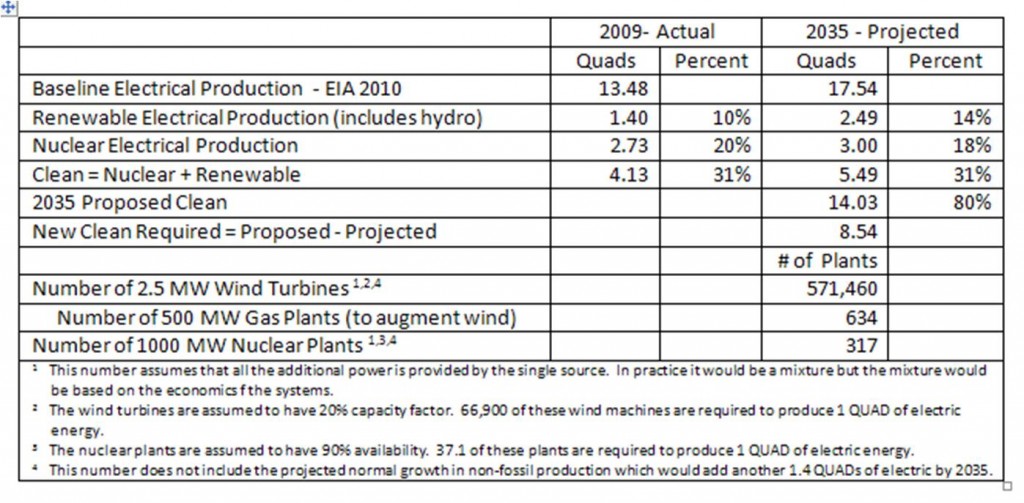[Editor’s Note: Ken Kok has 35 years experience in nuclear energy and R&D project management, including business development, facility management, proposal preparation and project planning. He has a master's from Michigan Technological University in Business Administration and Nuclear Engineering and is a licensed Professional Engineer and ASME Fellow.]
President Obama proposed in the 2011 State of the Union Address (SOU) that we have a goal of 80% of our energy coming from “clean” sources by 2035. The goal was not clarified as to the definition of clean energy so it is assumed that the mix of production will include renewables, e.g. wind, solar, geothermal, biomass, etc. as defined by the U.S. Energy Information Agency (EIA), nuclear, and others such as clean coal.
So what are we really talking about in such a major energy transformation? As calculated in Table 1, the staggering answer is 300+ large nuclear plants and 600,000 large wind machines–not to mention some 600 new gas-fired power plants to firm up the wind.
Table 1 – Evaluation of the electric energy production
Table 1 was generated based on the above numbers using data currently displayed by the EIA. As noted in the Table 1 footnote, the number of wind turbines is based on a 20% capacity factor. Because of the variability of wind and the need for stability in the electric grid the wind generation capacity needs to be augmented by a conventional, fast-responding generating technology.
Natural gas usually fits best in this application. The SOU scenario would require some 300 GW of this type of generating capability. The number of wind turbines (plus gas) and nuclear plants is presented to show the enormity of the task.
These numbers do not include replacement of current clean production capability such as nuclear plants that have come to the end of life. For example the current nuclear fleet even with life extension to 60 years will be at or nearing end of life in 2035. In addition the EIA forecast for the transportation sector shows 31 Quads coming from petroleum based fuels. Electrification in this sector might add considerably to the new electric generation requirements.
The SOU’s quick talk of a new energy future needs a detailed independent scientific evaluation examining and integrating all technical, economic, and environmental aspects in order to present a realistic impact of the proposed goal.
And we should not forget the fundamental question: why such a forced energy transformation? Does government really know best?
